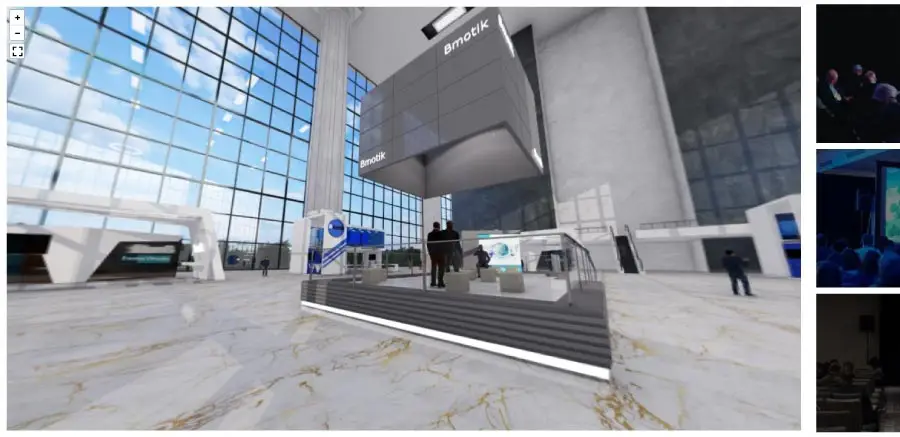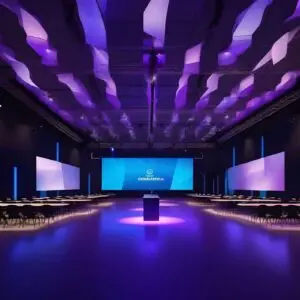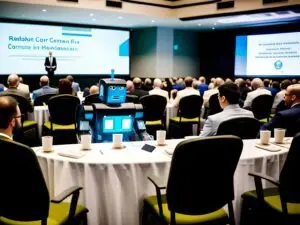SUCCESSFUL VIRTUAL EVENT, HOW TO ACHIEVE IT?
Although virtual events sound futuristic, the truth is that they have been happening and evolving since 1993. Year in which the first livestream that achieved 1 million views was made.
In this year 2020 there have been several technological changes. The boom in social media has generated new projections for how we communicate and connect with other people and with the world's environments.
In this era of change, we are experiencing the migration of several events of different magnitude to a fully or partially virtual format. This migration has several advantages: it reduces costs, minimizes the ecological impact by reducing the carbon footprint and allows reaching a considerably larger audience. For example, in 2018, Coachella's youtube livestream reached more than 41 million people in more than 232 countries, compared to the hundreds of thousands who were there in person.
UNDERSTANDING VIRTUALITY IS KEY
It is very important to understand that a successful virtual event goes far beyond moving what we have, know and/or believe about our event to an online world. A typical mistake is to believe that, just as a face-to-face event works, it will work in its virtual version.
The success of a virtual event depends not only on the virtuality of the event (i.e. the platform it runs on and its technological features). It also depends on the organization, logistics and planning that are behind the scenes and that are focused on the digitization of interactions.
Even more important is to understand how our users will behave in the virtual world and what actions or activities will bring them value when participating. We must rethink the content and the way we will display it, rethink the users' motivations. In addition, design our events and their components thinking about the ease of understanding that our participants will have.
TIMING AND ENGAGEMENT
Something we can highlight that face-to-face events have in common with virtual ones is that they must be eye-catching, attractive and full of energy. But to achieve this in the virtual world we face a different challenge that must be overcome with knowledge of how the Internet works. We must pay attention to what we call user experience and engagement, i.e. how we keep our users connected and involved.
OFTEN MORE IS LESS
Once we understand that digital navigation represents a rethinking of how we organize our events, we must approach the event itself, its logistics and planning. At this point it is necessary to have knowledge of what an event is, how it is planned and how it is executed.
We can find in the market many technological solutions to carry out virtual events. From a ZOOM platform or similar (which will not let us go beyond a webinar), to complex simulated virtual worlds.
We must be careful because, at this point of technological inflection, the user experience (both experienced and novice) is one of the most important points, as many digital experts preach: in many occasions more is less. We have to focus on the quality of the interaction and the user's ability to navigate and understand our platform, this is key to achieve a successful virtual event.
We can become too focused on the simulation of a virtual world and its visual details, leaving aside the ease of interaction and user engagement. This can be as bad as doing the opposite: designing or using a technologically poor or limited platform that does not allow us to show and transmit the true value of our event.
So, it is essential to cover all aspects, both visual and technological as well as organizational. To achieve this we must find a balance between technology and logistics, between visual impact and interaction, between quality of content and the methodology of its exposure.
TIPS FOR A SUCCESSFUL VIRTUAL EVENT
-
Distribute your content intelligently
Distribute your content in such a way that the user must navigate through different parts of the platform and even during different days. This way you will increase interest and generate more traffic.
Try to make your talks shorter, punchier and more interesting and give longer breaks than you would in a face-to-face event. This allows your users to take a break from the screen, explore more of the platform and prepare for the next sessions.
Don't just worry about the quality of your content, but how you can distribute it so that your users connect to as much of your program as possible, without getting tired of it.
-
Combines streaming content with interactive activities
Yes, live content is great, but it's a bit risky. So, if you compose your event only with live content, any technological failure will make your users not to come back. Keep in mind that if the only thing the event is composed of fails or bores, there's no point in being there anymore.
The solution is simple, design your platform with pleasant user experiences by making use of digital interaction tools, such as pre-recorded videos on demand, photo rooms, chats, chatrooms, virtual social rooms, gamification systems, etc. This will allow your users to be attentive to the high quality live content you have prepared and in case of any downtime they will be much less reluctant to wait and enter in the following minutes when the problem has been solved.
-
Create social points where you could not
Yes, virtuality has a great disadvantage and that is the lack of human contact. But you must realize that in the virtual world you can generate social spaces where it would not be possible in person. For example, in a conference room, through a Live Chat, you can allow users to interact with each other and ask questions to the speaker. All this in a much more active way than they could do in person.
You can also more easily connect people of different nationalities or from different markets in a networking space or trade show.
It is important to keep "the energy" in your virtual event. Therefore, you must have people and digital tools that are encouraging your users to interact and actively participate in the event. This also leads us to our next point.
-
Uses tools that already exist
We should not invent everything, there are already many digital tools that can help us to make a great virtual event.
Platforms such as Kahoot o Mentimetersocial networks such as Twitter or Instagramcan be vehicles of interaction and engagement that when integrated or used within our event platform can generate a very positive impact, in a simple and direct way.
-
Choose your technology supplier wisely
In most cases you will need a technology provider to digitize your event. There are many options out there, don't just choose the cheapest, or the best known. Consider your needs and limitations, find a vendor that can offer you something tailored to your event and has experience in both the digital/technology side and event development.
Many times you may require more than one supplier or one that transparently makes its connections with others known in order to develop a successful virtual event. For example, if your event requires a demanding level of visual production, a single company may not be able to supply the quality of the platform and the quality of the production. Therefore, beware of false or incomplete promises, an event involves the convergence of various talents, knowledge and experience and a serious supplier will show you its scope -and those of its allies- in a clear and proven way.
And finally...
-
Keep organization in mind
You can have the best technology provider, an impressive design, an impeccable platform, the best content and thousands of interaction tools. But, if you do not organize the development and logistics well, it is difficult to have a successful virtual event. For this, keep in mind:
- Regarding the speakers, are they all ready and organized by the time of the event?
- You have made a timeline of how the event and its activities will happen. What happens if there is an unexpected delay or transmission failure?
- The technology provider will provide technical support. But who will support the user about the event itself. Its development, program, objective, key dates, etc.
- What activities will you carry out as an organizer to encourage your users to participate?
- How you will manage the start and end times of each session.
- What can and cannot be done by event participants: users, sponsors, etc.
- How will you disseminate your event to take advantage of the greater reach that virtuality allows you?
- What will happen at the end of the event, will you sell the memories, leave an open access web platform, put all the content on YouTube or similar?
Remember that your technology provider is not the organizer of the event, therefore, you must cover all this organizational part in a responsible and dedicated way to achieve a successful virtual event. At this point, you may need another logistics provider with experience in event organization.
If you have any questions, do not hesitate to contact us at

















